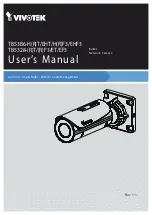
12
By classifying the traffic and placing it into an NNSC, complex QoS configurations are elimi-
nated. NNSCs simplify the deployment of a QoS-enabled network with Nortel Networks
switching solutions. Using the Web-based interface, select the NNSC that best suits the type
of traffic or application being classified on each Nortel Networks switching product and take
advantage of the default QoS settings. This saves on provisioning time but most importantly,
ensures that the QoS functions are provisioned consistently across the network.
NNSCs are also supported on the Passport 8600 Routing Switch, BayStack 470 Switches,
and the BayStack Business Policy Switch.
Gigabit Ethernet MDAs
The BayStack 460 Switch supports the latest Gigabit MDAs. Each of these MDAs will
support eight output queues and support traffic shaping. The three MDAs are:
• BPS2000-1GT 1-port 1000BASE-TX MDA
• BPS2000-2GT 2-port 1000BASE-TX MDA
• BPS2000-2GE 2-port Small Form Factor GBIC MDA
With the dual-port small form factor GBIC MDA, you can plug up to two small form factor
pluggable GBICs. There are three types of small form factor pluggable GBICs to choose from:
• 1-port 1000BASE-SX Small Form Factor GBIC (LC connector)
• 1-port 1000BASE-SX Small Form Factor GBIC (MT-RJ connector)
• 1-port 1000BASE-LX Small Form Factor GBIC (LC connector)
CWDM small form factor pluggable GBICs can also be used with the two-port small form
factor GBIC MDA. With CWDM, a customer can dramatically increase the bandwidth
supported over a single fiber. Instead of 1 Gigabit per fiber connection with a CWDM
GBIC, eight wavelengths can be supported per fiber. In other words, eight gigabits of
traffic can be supported across one single mode fiber. There are eight different wavelength
GBIC options for 40 km and eight different wavelength GBIC options for 70 km.
Traffic Policing
Traffic Policing enables provisioning of different levels of service by limiting traffic
throughput at the ingress (incoming) port of the BayStack 460 Switch. For example, if a
port is set to certain speeds such as 10 Mbps, all traffic under 10 Mbps on that port will
pass, and traffic that exceeds 10 Mbps on that same port is dropped. Service providers will
find this especially useful to control bandwidth to their customers.
IP traffic shaping
IP traffic shaping offers the ability to smooth IP classified traffic from the Gigabit uplink
ports of a single BayStack 460 Switch. While traffic policing is needed to provide different
levels of service to data streams on the ingress ports, traffic shaping is needed to smooth
the traffic on the uplink connection from the BayStack 460 Switch to the network core,
yielding the most efficient bandwidth utilization. Service providers or carriers utilize this
feature when they are selling Ethernet in place of traditional Frame Relay, ISDN, or ATM
WAN access solutions. Some enterprise customers use traffic shaping as a mechanism to limit
bandwidth without having to swap out physical interfaces, leaving them room to grow.
Summary
With more than 100 years in telecommunications, Nortel Networks is uniquely posi-
tioned to help your business reduce costs by combining voice and data into an integrated
system. Why take a chance on a vendor that only understands part of the equation? Let us
show you how the BayStack 460 Switch—along with other Nortel Networks products—
can increase your profitability, streamline your business operations, increase productivity,
and help you gain the competitive edge.


































